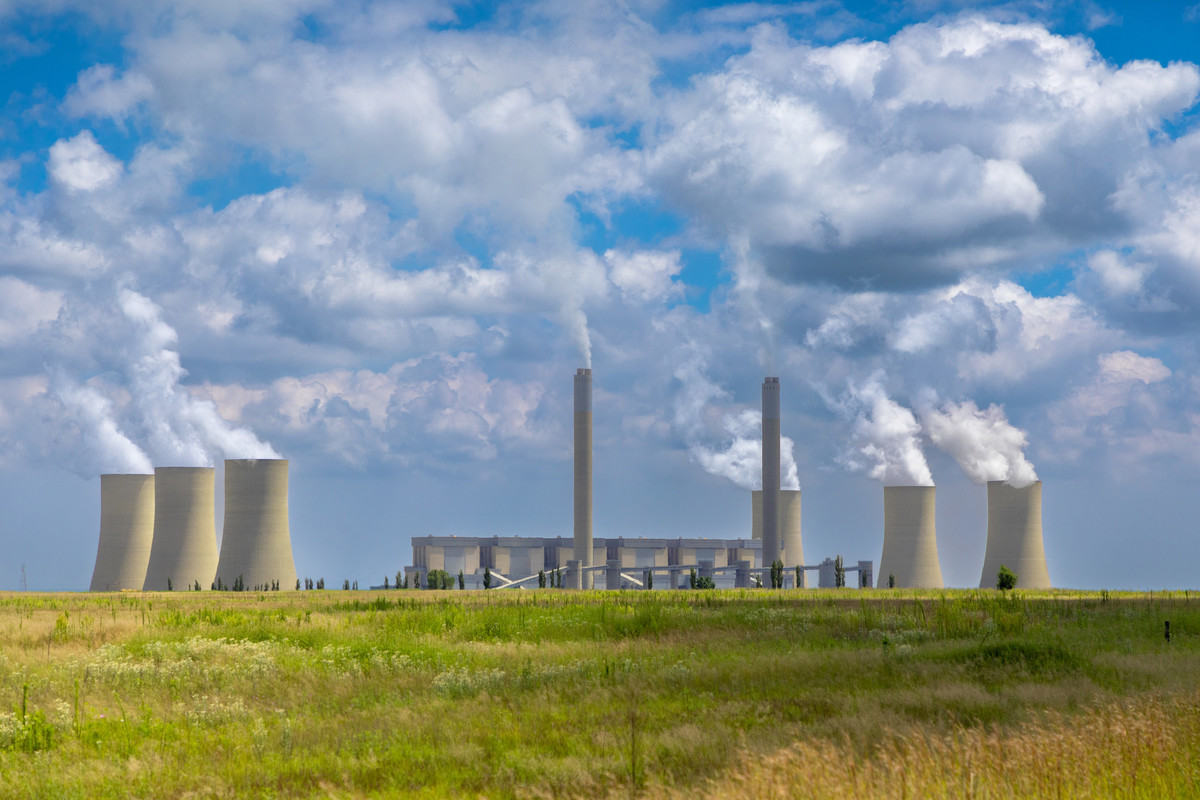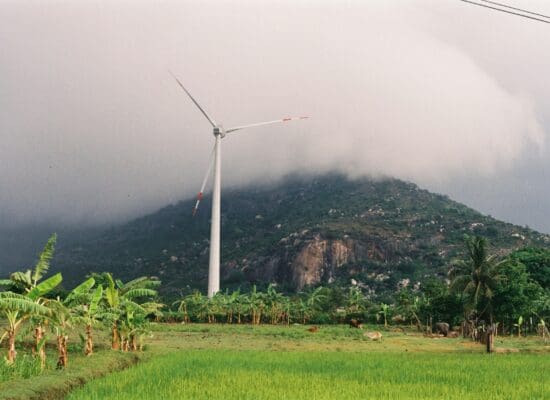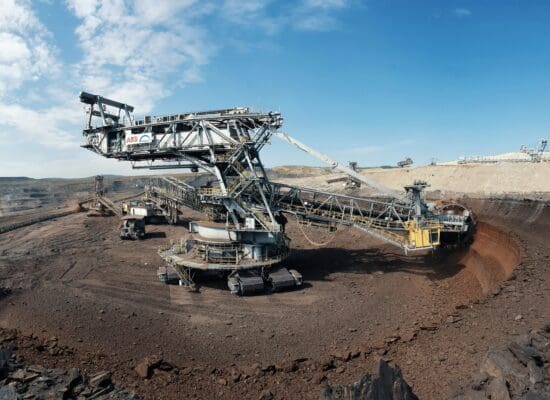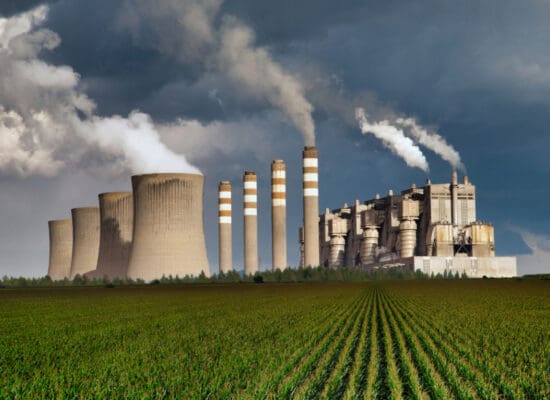
On 9 September 2025, the Innovation Regions for a Just Energy Transition (IKI JET) project hosted an Expert Exchange to explore the flexibilisation and repurposing of coal-fired power plants. The discussion brought together experts from the German Aerospace Center (DLR); the international technical association for energy plant operators VGBE Energy e.V. and the Chilean consultancy Inodú. Speakers examined what role coal plants can play in an electricity system increasingly dominated by renewables; what technical and operational changes are required; and under what conditions flexibilisation genuinely supports a just energy transition.
Research insights
Energy systems perspective
Jürgen Kern and Andreas Meurer from the German Aerospace Center (DLR) presented an ongoing study that looks at the role of coal plants within future electricity systems in four partner countries of the IKI JET project. Using its REMix model, which calculates cost-optimal ways of meeting hourly electricity demand, the team is testing thousands of “what if?” scenarios up to the year 2040. These scenarios vary by renewables build-out; growth in demand for electricity; grid and storage development; and policy targets. The approach is not to predict one future, but to test a wide range of possibilities to see how coal assets might perform under very different system conditions.
A central focus is the “minimum load” — the lowest stable output at which a plant can operate. In systems with high solar and wind generation, lowering the minimum load allows coal units to stay online at very low levels, ready to provide backup when output from renewables drops. The DLR is also considering options such as repurposing sites for energy storage or to use alternative fuels. By combining plant-level assessments with system-wide modelling, the study aims to identify the circumstances under which flexibilisation measures are effective and when other technologies (such as gas plants or storage) may provide the required flexibility more efficiently.
The key message was that there is no single answer: in some contexts, lowering the minimum load of coal-fired power plants is critical for solar and wind integration; while in others, gas plants, storage, or imports may already cover flexibility needs. Policymakers therefore need to consider flexibilisation not in isolation, but as one element of a broader system strategy.
Operational experience from Germany and emerging economies
Claudia Weise from VGBE energy e.V highlighted how Germany’s coal fleet has already adapted to a system where renewables supply nearly 60% of the country’s electricity. Conventional plants now provide mainly the “residual load” — the demand not covered by renewables. This requires much more cycling, with plants often shutting down overnight or at weekends and restarting the next day: an operating mode known as “two-shifting.”
Three technical factors are critical for this shift. The first is the minimum load, which determines how far output can be reduced while staying stable. The second is the “ramp rate,” or how quickly a unit can increase or decrease its generation to follow fluctuating wind and solar. The third is the start-up and shutdown time, which affects how quickly a plant can be brought online when demand rises. In Germany, plants have managed to improve all three factors through targeted changes.
Importantly, most improvements came not from major new investments, but from optimising “instrumentation and control” (I&C) systems to handle a wider operating range. Small mechanical adjustments, such as replacing on/off valves with adjustable ones, were also effective. At the same time, maintenance practices had to adapt, as more frequent cycling increases wear and tear. Weise stressed that flexibility is as much about people as it is about technology: operators trained for steady base-load operation were initially hesitant, so awareness campaigns and simulator training were crucial for building confidence.
The financial side also matters. Flexible operation reduces the “full-load hours” of a plant, lowering revenues. In Germany’s liberalised power market, plants are forced to adapt because they only earn money when prices are high enough to cover costs. In more regulated systems, however, additional support or compensation schemes may be needed to cover investment and operating costs.
Pilot projects in countries such as India, South Africa, and Turkey have shown that a phased approach works best: starting with test runs and data analysis; introducing specific technical adjustments; training operators; and then embedding new procedures into everyday practice. Over time, this can make flexible operation routine. As Weise concluded, flexibilisation is not a technological moonshot; it’s mainly about process understanding, market design, and people’s willingness to change.
Country case: Chile
Chile provides a concrete example of how flexibilisation is supporting the transition. A recent study by Inodú examines how improving operational flexibility of coal plants has supported Chile’s rapid renewable expansion.
Inodú experts, Jorge Moreno and Victoria Frohlich, started their input by highlighting that, over the past decade, the rapid growth of solar and wind has already enabled the retirement of about 30% of the country’s coal capacity. Yet newer coal plants remain important, especially for evening demand, dry-season shortages of hydropower, and essential ancillary services (such as frequency control and voltage stability) that renewables cannot yet provide on their own.
The key change has been lowering the minimum load of coal units. In 2017, Chilean plants could reduce output only to between 31% and 66% of capacity. By 2025, most had lowered this to between 20% and 40%, with nine units operating at as low as between 20% and 25%. This allows them to stay online during the day at minimal output while solar meets demand, and then ramp up smoothly in the evening. According to Inodú experts, this performance now ranks among the most flexible worldwide.
Inodú’s modelling shows that reducing minimum loads further would bring system-wide benefits, such as lower curtailment of renewables (i.e. less wasted solar and wind), smoother evening ramps, reduced reliance on costly out-of-merit plants, lower emissions, and fewer compensation payments for keeping thermal units online. At the plant level, operators have validated “single-mill operation” (running with one coal pulveriser instead of several) as a reliable way of maintaining stable combustion at low loads, as long as control systems are adjusted and operators are trained.
Chile’s experience suggests that flexibilisation is not an alternative to phasing out coal, but it is a bridge. By making existing plants more adaptable, the country has been able to expand renewables quickly while keeping the grid stable, buying time for further investment in storage and transmission.
The panel concluded with an open discussion on whether flexibilisation genuinely supports a coal phase-out or risks prolonging the role of coal. The consensus was that flexibilisation can reduce emissions in the short term by lowering the operating hours of coal plants and creating more space for renewables, but it must be paired with clear phase-out policies to avoid locking in fossil capacity. Questions also focused on economics and system impacts: in Chile, reducing the minimum load has helped to reduce the curtailment of renewables and cut evening power prices; in Germany, flexible operation became viable thanks to market incentives, although additional compensation may be necessary in more regulated systems. Ultimately, the discussion reinforced that flexibilisation is not a stand-alone solution but part of a broader transition strategy that combines renewables, storage, grid upgrades, and supportive policies.
Key takeaways
- Flexibilisation is not a substitute for phasing out coal, but it can smooth the transition by allowing more renewables onto the grid without compromising stability.
- Lowering the minimum load is the single most important measure across contexts.
- Improvements often come from control systems and operating practices, rather than from costly retrofits.
- Operator training and engagement are vital: flexibility depends on people as much as it does on technology.
- The value of flexibilisation varies by context: in some systems it’s essential; in others, storage or gas may already provide the flexibility that is needed.
Speakers
- Jürgen Kern, Senior Researcher of Energy Systems Analysis, German Aerospace Center (DLR)
- Andreas Meurer, Researcher of Energy Systems Modelling, German Aerospace Center (DLR)
- Claudia Weise, Project Director of International Affairs, VGBE Energy e.V
- Jorge Moreno, Senior Consultant, Inodú (Chile)
- Victoria Frohlich, Senior Consultant, Inodú (Chile)
See the full presentation here:
See the full recording here:
Recordings in Bahasa Indonesia, Mongolian, Thai and Vietnamese to follow.
Further reading from Inodú
Flexibilsation of thermoelectric facilities as a resource that contributes to a more harmonious energy transition [English]
Flexibilisation of Guacolda Unit 1. [Spanish]
Flexibilisation of Guacolda Unit 2. [Spanish]
Flexibilisation of Guacolda Unit 3. [Spanish]
Stay Informed and Engaged
Subscribe to the Just Energy Transition in Coal Regions Knowledge Hub Newsletter
Receive updates on just energy transition news, insights, knowledge, and events directly in your inbox.


